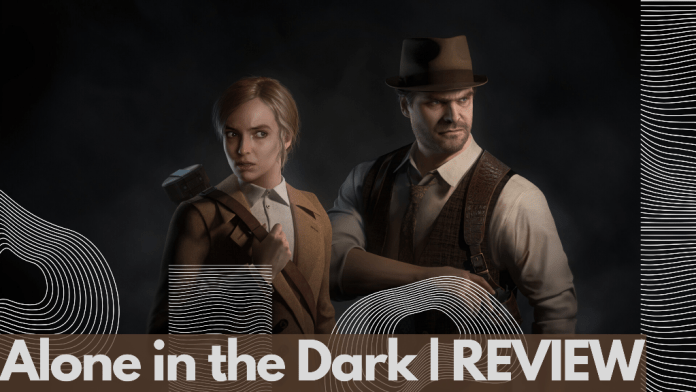Alone In The Dark is a remake of the horror classic that does everything exceedingly well.
It’s rare when I get totally hyped for a game, and it actually comes out well. Thankfully, Alone In The Dark exceeded basically all my expectations. The early demo we got was kinda iffy and I could see the game swinging either way after that, but luckily it was just a taste of what was to come.
Alone In The Dark
Developer: Pieces Interactive / THQ Nordic
Platform: PlayStation 5, Microsoft Windows, Xbox Series X/S
Release Date: March 20, 2024
Since the first game launched back in 1992, survival horror has changed dramatically as a genre in terms of gameplay and mechanics. The new remake finally brings the franchise into modern times and has a killer story to tell with it. The game even reimagines the classic horrific manor by rebranding it as a psychiatric hospital filled with interesting characters, and environmental puzzles to craft the location itself into an antagonist. Every step you take has an interesting aspect to it. It may not always be creepy, but gives a sense of being off.
This is what I love about Alone In The Dark the most. It isn’t outright horror in your face non-stop. Instead, it builds the tension so that when something horrific happens, it legitimately spooks you to a point of wanting to run. Unlike other games which are consistently tossing grotesque imagery in your face—potentially desensitizing you to it as you play—Alone In The Dark utilizes its environment to build and craft a story with you in it.
The game goes back into the 1920’s with two main characters to choose from, Edward Carnby and Emily Hartwood. Each character will roam about the facility in their own way, and how their stories intertwine is remarkable. Each character has a unique interest in the facility, and will make remarks, or stumble their way through the horrors, with different aspects affecting them. It makes playing through the game again worthwhile just to see the new viewpoints of what’s happening.
You can catch clues and hints of what the other character is currently going through as you progress, but it might not totally click on your first try, which makes you want to at least give the other character’s playthrough a shot. It honestly didn’t change the dynamics enough to truly warrant the two characters overall, but it does enough to make your second playthrough much more interesting for trophy cleanup.
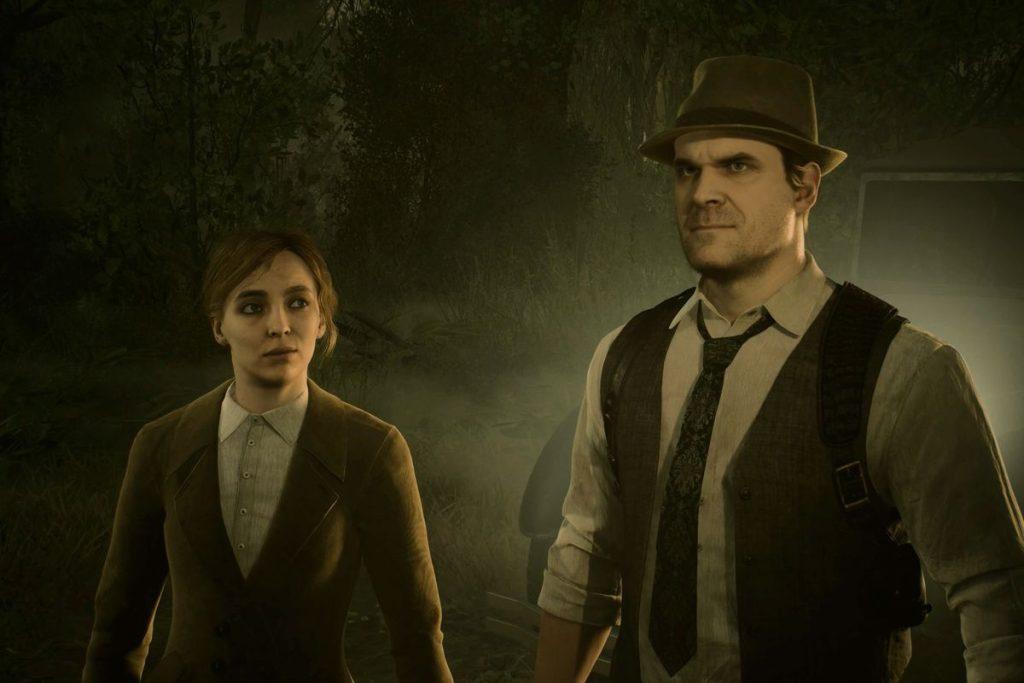
The 1920’s approach really sets the game apart as well. Everything down to the soundtrack and the way the characters present themselves is phenomenal. It’s like transporting yourself into LA Noire, with horror hidden beneath its layers. Not only that, the game utilizes the inspector approach to help carry itself and encourage you to find clues and items hidden throughout. So it legitimizes these aspects of gameplay with the theme, and then has you questioning the stories you’re told by each character by putting you into basically an insane asylum.
Which leads me to yet another amazing aspect of the game. The entire game is voiced. I couldn’t believe it because I’m so used to games taking the easy way out and just having story elements hidden within texts you find. Instead when you find journals or notes by characters, they are fully voiced by that character; and they are voiced amazingly well. Each character has a personality which comes to life through their words. It helps keep you drawn into the game. It’s so much better than being slapped with a wall of text at every turn.
Plus with the full voice cast, you also get actual characters to interact with who are odd and blur the lines between authentic, and nightmare. You are left questioning every character’s legitimacy in the stories you’re being told, and that leads you to questioning if your own character is perhaps there for a reason.
The two main characters obviously have some talent with a long list of accolades, but honestly this game should be highlighted in their careers too. David Harbour and Jodie Comer take over the two main characters, and both do a phenomenal job of presenting the story. Their voices really add depth to everything in the game. David Harbour in particular really emphasized his character as an investigator, and diving down the rabbit hole with him was so satisfying because he fit the character absolutely perfectly.
Gameplay wise, Alone in the Dark does a remarkable job of blending puzzles into every aspect to progress. The game even breaks this down for you in the settings by offering two different modes. The first being a “classic” mode which will have you looking a little deeper for clues (such as shuffling through your notes for anything guiding you), and a second setting which will make clues more abundantly clear as you come across them (so your character might mention “this must go to the door” for example). I personally chose the first mode and not once ever hit a roadblock I couldn’t figure out on my own, but at the same time I was always anxious to piece things together and see where it led.
While there are obvious puzzles, such as needing pieces to a clock, or a key that locks a door, the environment itself is a unique puzzle on its own. As you run from enemies, or simply exploring the facility, you’ll find yourself entering and exiting a lot of hallways and doors. Easy to lose track of, and get turned around, if you aren’t paying attention. You also have to remember key components you discovered like an odd laying medicine cabinet with a lock on it, or a glass piece that will let you finish a light puzzle in another room etc…
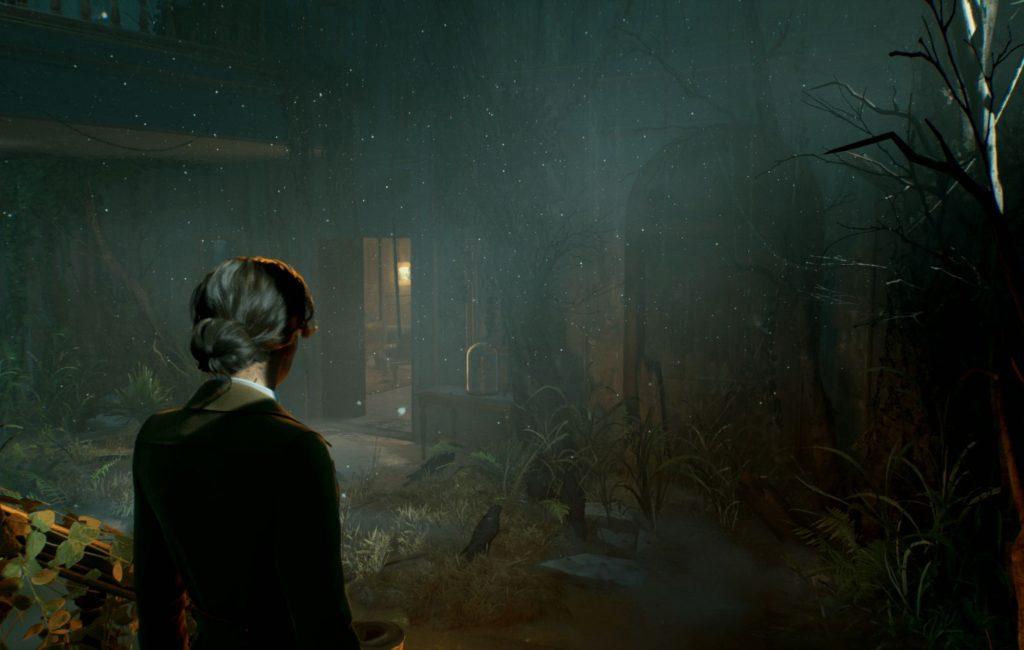
Almost the entire time you’re playing the game you are trying to figure out some new puzzle and need to remember what goes where. Along with this, clues are hidden basically in every aspect of the game. In the environment, in notes you pick up, or just the character commenting on something out of place.
Alone in the Dark features some amazing transitions between the facility and nightmares your character has. In most horror games you get the typical hallway effect where it slowly transitions the environment, or you turn around and the whole world has transformed. Alone In The Dark instead does it quickly, right in front of you, and it’s incredible. You could walk through a door, look up, or simply touch an object and the environment could pulse you into a nightmare world—which is dark and scary in its own right—and then as you complete it you will pulse right back.
It’s also great storytelling as characters will appear and talk to you as you enter each world. For example when you return from the nightmare a character could ask “where did you go?” and your character will have a hard time explaining it. As the game progresses it utilizes this aspect a lot more to create tension with quick pulses or slow transitions to amplify the circumstances.
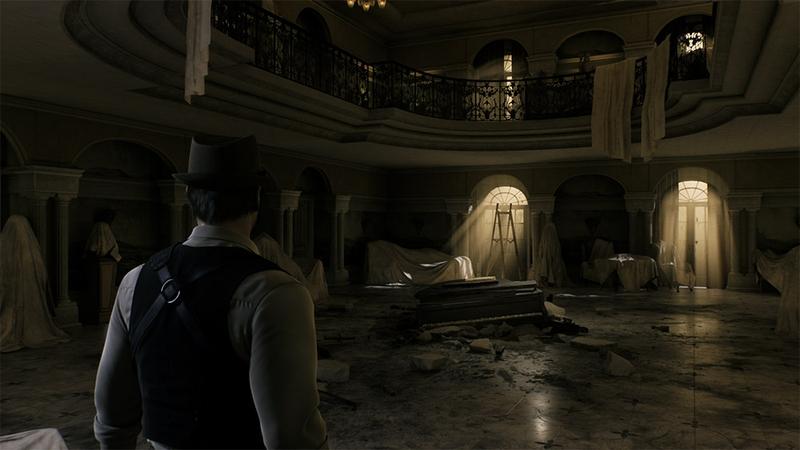
There isn’t a “leveling” system, thankfully. So you don’t enter the game as a stumbling idiot that needs to learn how to hold a gun steady via some perks…. Simple gameplay mechanics are all unlocked, and guns you find do their full power and abilities right as you pick them up. I love this.
Melee weapons continue this trend, with them all basically being of similar depth. Everything you pick up has the same power, and all of it will break, but it leads to a sense of literally finding anything you can to swing at enemies. This is especially true when the item breaks, and it will, and you’re left stumbling trying to find something else to swing. I’ll admit that the restriction of not being able to physically fight without an item is an oddly frustrating aspect, but at the same time it added to tense situations and made me feel more in danger since I couldn’t protect myself anymore.
Generally speaking, the game also does a rather good job of avoiding combat…Which is what these games should do. Yes you get a gun, but it’s basically useless the entire game. There were many moments where I felt like I wanted to shoot my gun, but figured it was safer and easier not to. I found this aspect to be so much better than blasting hordes of enemies as I ran away, like you do in similar games. Often times the gun is used as a quick escape.
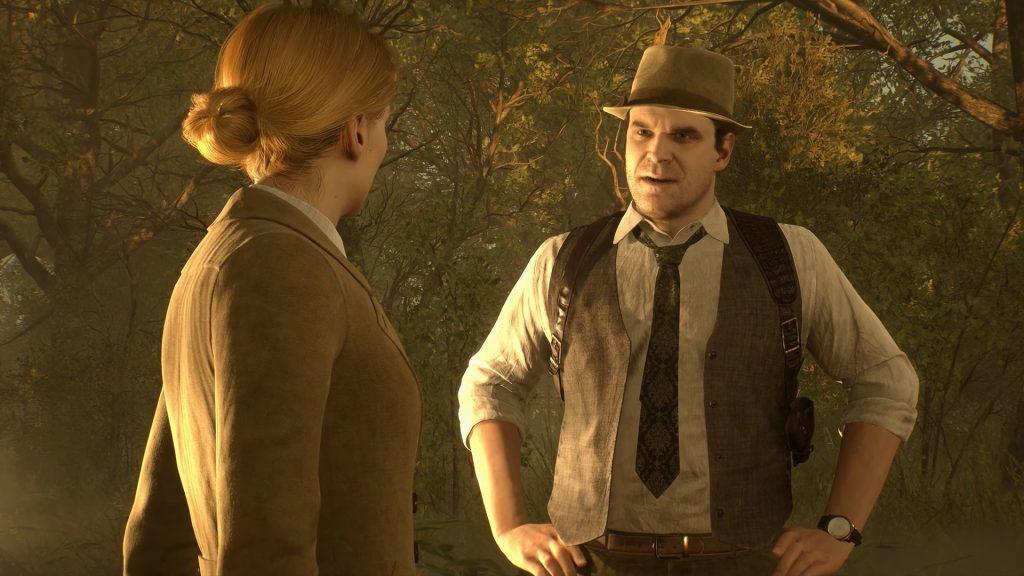
However, the times you do need combat, is when the game kinda falls a bit flat. Shooting is oddly clunky at times, and melee is frustrating as all hell. The worst aspect of combat was throwable items.
You can pick up certain items and throw them to distract enemies, but you need to either throw it immediately (which is what the quick action does), or you can hold it in your hand and slowly walk with it. You can’t pick it up and save it for later. Luckily there are often tons of items lying around, but finding that right angle is just annoying. Adding to the annoyance is the enemies themselves are very obviously following patterns, like older classic games, so you kind of need the distraction to help you find the solution, but you’re stuck slowly getting into position.
The enemies themselves are hardly satisfying for a horror game. I’m not sure why so much design work went into the Manor itself and creating interesting characters, only to have the enemies be very basic and ugly looking. None of them were too memorable, or scary. They do a good job of making them creepy with placement, or by putting you into tense situations, but I just wish the design had more effort to make them interesting. Instead you get bland enemies that are easily fooled by any experienced gamer.
Visually the game isn’t going to blow graphics cards up since it’s clearly utilizing a visual style with old school style graphics, but again, there is just something about the game not reaching for unneeded aspects other games often reach for. Its visuals are good “enough” to offer the aesthetic of horror, the gameplay is good “enough” to be tense, and all their focus went into the story, characters, and puzzles. This is the focus I would want, and if it means the game isn’t photo realistic, I’ll take that trade all day.
That being said, it’s hard to say this is a horror game. As I’ve mentioned before, I was hardly ever scared. There is no really overwhelming threat to make it a thriller either since chase sequences are quick and easy to get through. Yes there are moments where you’re scared, but the game overall plays like an action adventure title that just sprinkles some horror aspects in here and there. Once you accept that fact, the game becomes a little more fun to play and opens its audience a little more since I know many people probably wouldn’t touch it if it were “scary.”

